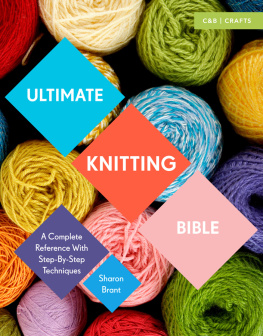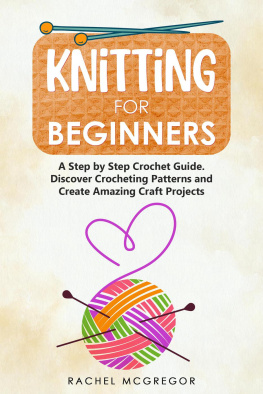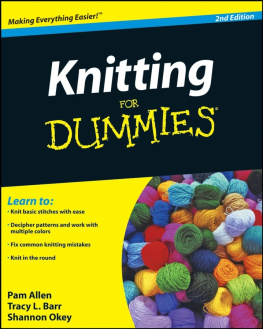




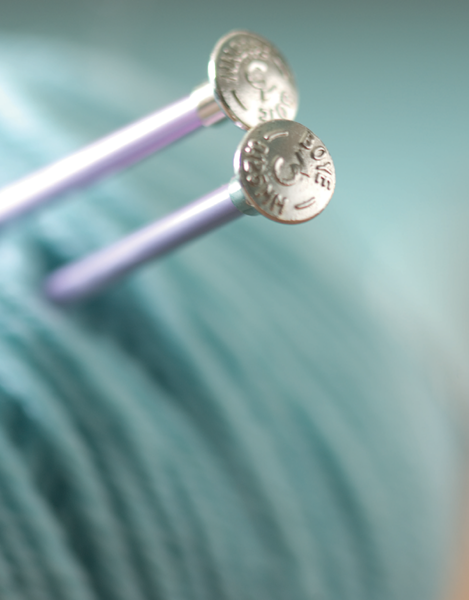
contents

introduction
Welcome to the Ultimate Knitting Bible. If you are a novice knitter then this book will guide you step by step through everything you need to know in order to confidently knit any project that catches your eye, from the simplest scarf to the most gorgeously textured and embellished sweater. If you are already a member of the global knitting community, then I hope that you will find this book an invaluable treasure trove of techniques that you can dive into to look up and learn skills that have baffled you until now.
I have had the pleasure of working with Rowan for many years, teaching beginners to knit and helping lots of keen knitters to improve their skills or to learn something completely new. So I dedicate this book to all of those ladies who have said to me over the years, Have you got all of these techniques written down?. Ive always had to say, No, but now I am pleased to be able to say a resounding Yes!.
Many, many hours have gone into researching, illustrating and writing the myriad of techniques you will find in the 9 chapters that make up Ultimate Knitting Bible. The clear illustrations show you exactly how to manipulate the needles and yarn to achieve each technique and there are swatches so you can see just what the finished results should look like. The written descriptions of each step back up the illustrations with jargon-free explanations and there are lots of tips on how to obtain the best results and improve the appearance of your finished project. Look out for the samplers and stitch patterns that you can knit to practise the techniques you have studied in the chapters.
If you are picking up needles and yarn for the first time then I recommend that you start at the beginning of the book with the appropriately named Getting Started chapter. Move on to Knitting Basics for your first lessons in casting on, holding the needles and yarn, knitting, purling and casting off. Once these skills are mastered you can move from chapter to chapter as you wish, exploring the fascinating craft of knitting at your own pace. If textured knitting intrigues you, then turn to to see just how easy it really is to work cables, bobbles, twists, lace and other tactile techniques. Have the mysteries of colour knitting confounded you for years? Here, intarsia and Fair Isle are covered in depth with all the different ways of holding the yarns explained so that you can find a method you are comfortable with.
Whether you want to knit socks, use sequins and embroidery to embellish knitting, produce elegant fringing or the perfect pocket, you can find out how to do it here. A comprehensive chapter on finishing your projects shows you how to get that really professional look and if you do make a mistake, just flip to the Troubleshooting chapter to see how to fix it.
The world of knitting is contained in the 256 pages of this book and I hope that it inspires and teaches you to make many beautiful projects. I look forward to perhaps meeting you at a workshop one day and seeing some of the results of your work.

Sharon Brant
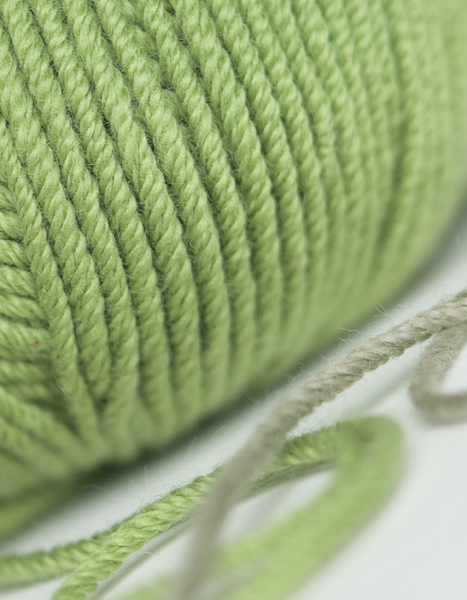
getting started
From choosing the right needles to understanding your tension (gauge), on the following pages you will find useful information for all knitters, regardless of skill level.
equipment
Knitting always begins with a pair of needles and some yarn. However, there are some other items you will find useful.

ebony needles

wooden needles with turned decorative heads

metal needles

wooden needles with decorative heads

bamboo needles
straight knitting needles
There is a huge choice of knitting needles available in different woods and materials. The key to good needles is for them to be flexible, smooth and have well-shaped points. Be careful, as lovely decorative tops can make the needles heavy and so give you wrist problems. However, they are beautiful for decorating your work room or office!

straight needles with plastic extensions
These are my favourite needles for large projects. You knit backwards and forwards, as with normal straight needles, but the weight of the work slips onto the plastic extensions and can lie on your lap rather than having to be supported by your wrists. Great for travelling, these needles are available in bamboo, plastic and metal.

double-pointed needles
These needles are used for working in a round () to make gloves, socks and neckbands. Always keep them tied together with an elastic band as it is so easy to lose one.

bamboo circular needles

ebony circular needles
circular needle
This is the needle to use when working in the round ().


